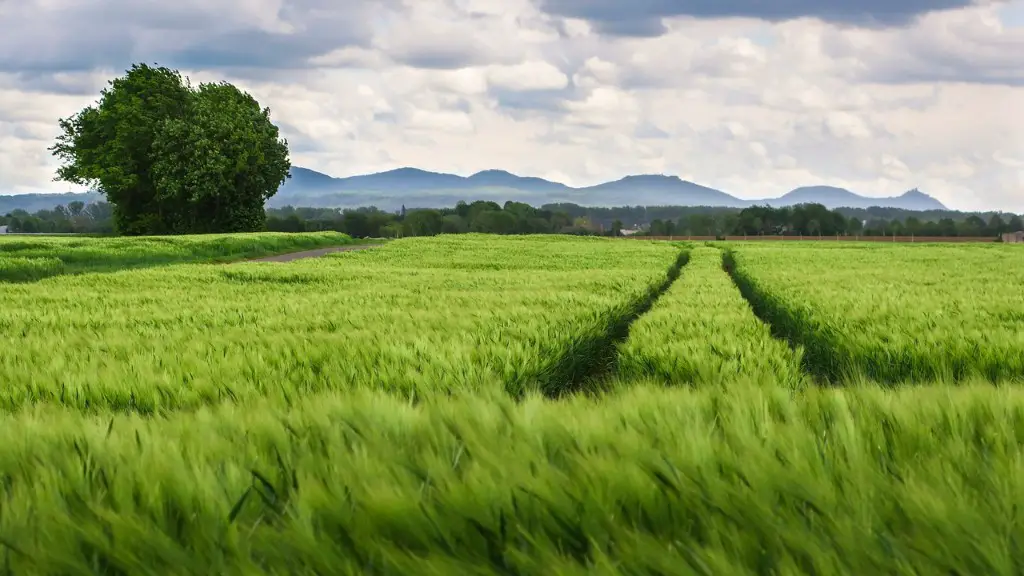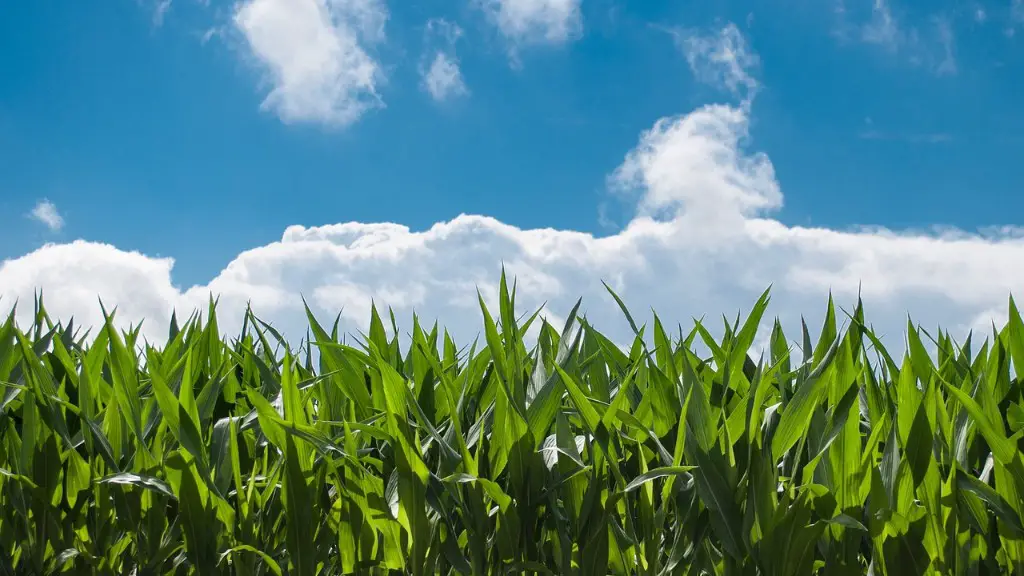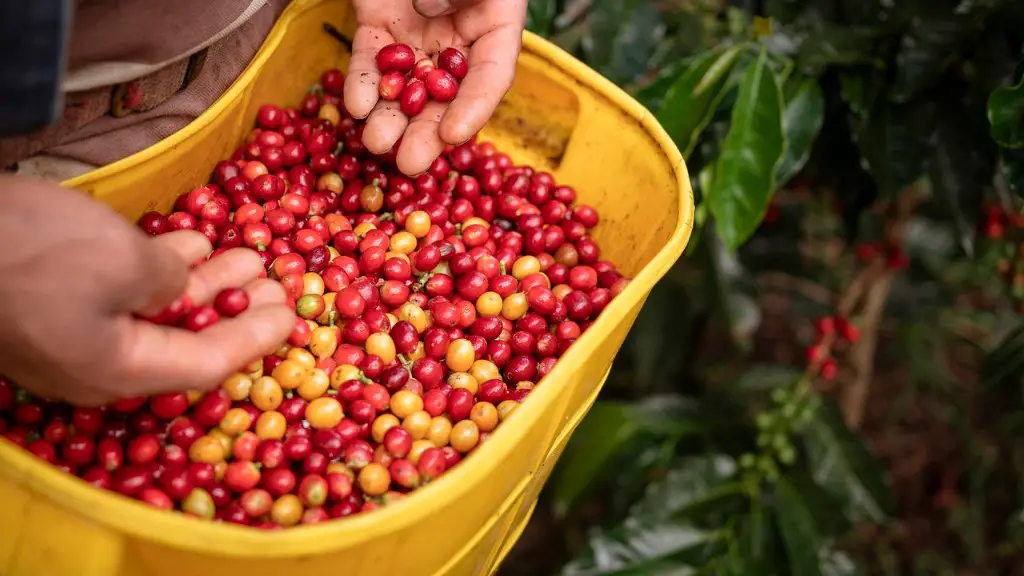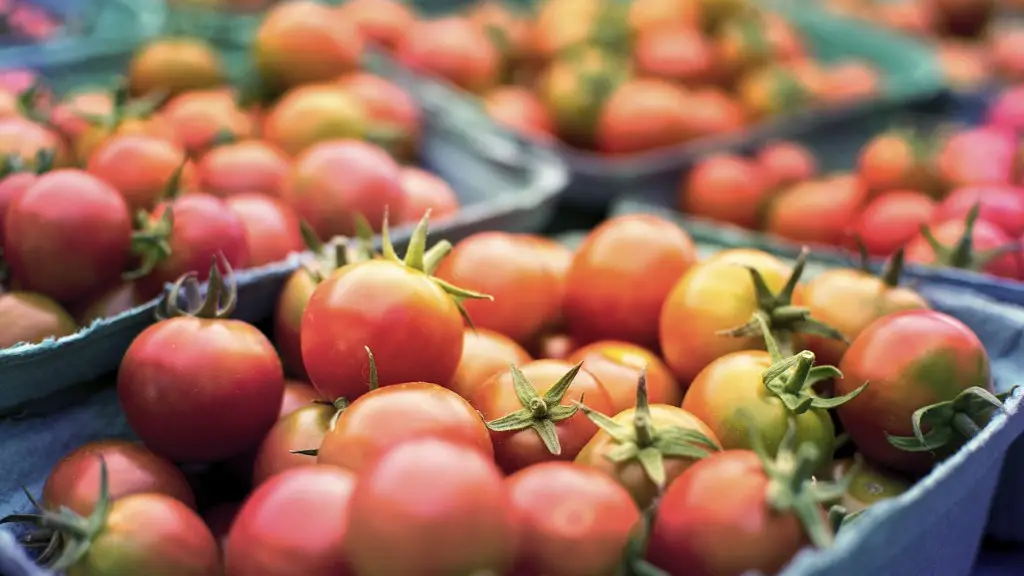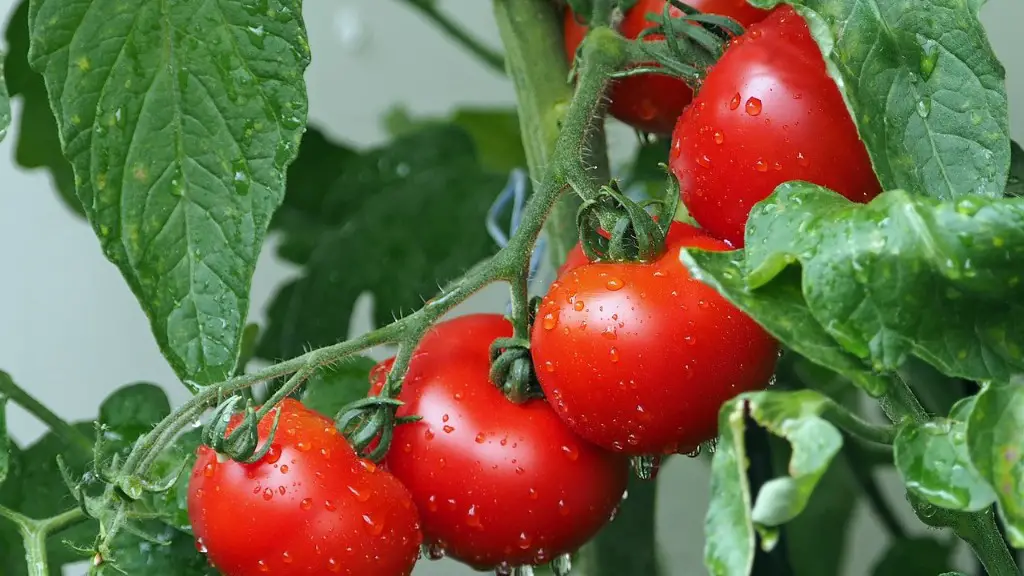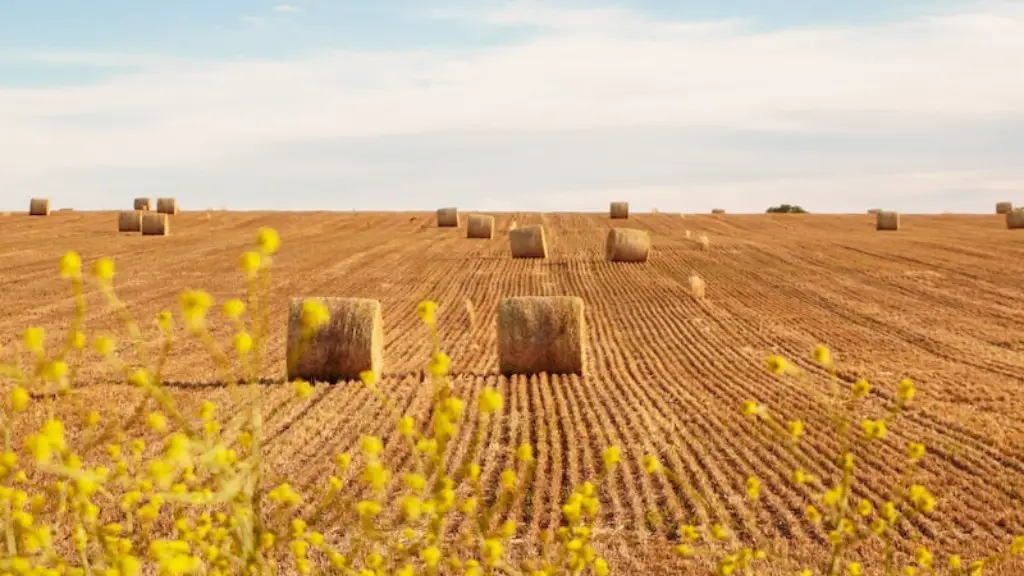Agriculture has a long and intertwined connection with biology. The science of agriculture requires an extensive knowledge of biological diversity, the natural environment, and biological processes. By manipulating the environment, agriculturalists can affect the condition of the land, the water cycle, and the air. In turn, these environmental changes will influence the health of plants, animals, and people. To be successful, agriculturalists must understand the biology of the various species they cultivate and be knowledgeable about the baseline biological mechanisms and changes that occur in response to agricultural practices.
Agricultural productivity is linked to biological diversity. The diversity of the genetic makeup of a species affects the crop yield and pests’ susceptibility to treatment. Furthermore, land management practices and techniques which aim to reduce the variability in the land’s biological attributes, such as soil fertility and water retention, can improve crop production. Acknowledging this connection, farmers can use biological diversity to their advantage by integrating numerous species into their fields and thus improving overall agricultural productivity.
The relationship between agriculture and biology also extends to the field of biotechnology. Genetic modification and breeding technologies are used to develop products that can benefit agricultural production, such as improved crops or enhanced pest resistance. By genetic engineering, the desirable traits of a species can be enhanced, providing a higher yield of a crop with fewer risks. This increased efficiency and quality of the crop can lead to improved market value, opening up additional market opportunities for farmers.
Agricultural pest management is another application of a biological understanding of agriculture. Farmers employ an extensive variety of pest management practices, utilizing pesticides, natural predators, and even other crops to control the crops’ pests. Our understanding of the pests’ behavior, the environment of pests, and the pests’ life cycles enable farmers to effectively manage their pest populations.
Moreover, the use of microbes, such as bacteria, viruses, and fungi, is another important application of biology in agriculture. These organisms can be bred to acquire certain desirable characteristics in agricultural products. For example, natural nitrifying bacteria can be used for soil fertility management and therefore improving crop productivity. Similarly, viruses and fungi can be used to improve the quality and storage life of fruits and vegetables.
In conclusion, the wide spectrum of biological knowledge used in agriculture is remarkable and indicative of the intricate relationship between the two sciences. Agriculturalists must understand the biological diversity and environmental functions to successfully manage and cultivate their lands. Additionally, the application of biotechnology provides a powerful tool in improving agricultural productivity and market opportunities. Furthermore, the utilization of pests’ and microbes’ biological behavior and life cycles wide array of biological lessons for sustainable agricultural production.
Crop Breeding
Crop breeding is a form of biotechnology whereby farmers utilize plant genetics to produce high quality and high yielding crops. Through genetic modification and breeding techniques, traits of a species can be improved, leading to higher market value. Furthermore, this enhanced crop production can help feed a growing population, as farmers increase crop yields without sacrificing the quality of the yield. Through crop breeding, farmers can select high yielding crops in order to maximize their profits.
In order to achieve these goals, various methods of crop breeding are used. In traditional breeding methods, farmers will cross two plants with desirable traits to produce a plant that is similar to both parent plants, but has a higher-than-average quality. In this method, traits are carefully chosen and bred into a single plant in order to improve it. Other traditional methods involve propagating varieties of plants that can survive in adverse conditions.
In modern crop breeding, methods such as recombinant DNA mining, forward engineering and mutagenesis are employed. Recombinant DNA mining entails isolating a desired gene from one organism and transferring it to another. Forward engineering focuses on creating a whole organism from synthetic components and mutagenesis involves introducing gene mutations into the desired organism. These biotechnologies allow for the precise manipulation of genetic material, leading to the production of higher yielding and higher quality plants.
Crop breeding is a critically important application of biotechnology, as it helps producers provide better quality and higher yields, while allowing them to market their produce at competitive prices. Farmers need to understand the basic principles, methods, and applications of this form of biotechnology in order to maximize the yield and quality of their crops.
Soil Management
Soil management is a key component of agricultural success. The soil acts as a base for crops and serves as the root of agricultural production. Therefore, it is essential for farmers to understand the important processes and interactions related to soil management. Through understanding soil quality, properties, and nutrient cycles, agriculturalists can use this knowledge to improve fertility and enhance productivity. Additionally, these understanding will help improve water retention and prevent erosion.
Soil quality depends on an array of factors, such as soil structure and drainage. Through assessing the soil structure, farmers can identify and manage soil compaction, a phenomenon caused by the compaction of fine particles through heavy use and improper tilling, which can lead to decreased plant growth and yield. Furthermore, evaluating the soil drainage helps agriculturalists identify waterlogging and nutrient deficiencies which can lead to decreased growth and productivity. Thus, understanding and managing soil structure and drainage can help optimize crop growth.
Another important soil process is nutrient cycling. Nutrient cycling is the process in which nutrients, such as nitrogen and carbon, are cycled between soil, plants, and the atmosphere, in a continuous and interconnected group of processes. Thus, it is important for agriculturalists to understand this cycle, as it can affect plant growth and yield. Furthermore, by understanding the process and application of soil amendments,such as fertilizers and amendment additions, agriculturalists can optimize crop production and health.
In conclusion, soil management is a fundamental part of successful agriculture. Farmers who understand the important processes and influences related to soil health, such as structure and drainage, can improve crop yields and optimize production. Furthermore, the knowledge gained of the nutrient cycle and its application can also increase productivity. It is clear then, that understanding and managing soil health is key to providing a successful crop.
Integrated Pest Management
Integrated pest management (IPM) is an important concept to understand in agriculture, as pests are the primary destroyers of crops and cause tremendous losses for farmers. IPM is an approach to the control of pests in which strategically selected methods based on the estimated risk of the pest’s damage and their population level are used in combination. This helps to minimize the risks presented by the pests and maximize crop yields.
The aim of IPM is to reduce damage from pests, while sustaining an ecosystem with a balance between plants, animals and the environment. To achieve this, farmers use a variety of methods of pest control, such as natural predators, biopesticides, and cultural practices. Natural predators involve interfering with the pest’s life cycle by introducing the predator species which feeds on the pest’s larvae. Biopesticides are non-conventional pest control methods which use naturally occurring beneficial organisms such as microorganisms, fungi and bacteria to reduce the pest population. Cultural practices can involve crop rotations, intercropping and the elimination of alternative food sources for the pests.
In addition, the IPM approach involves monitoring the pest populations, understanding their life cycle and habitat, and effective communication and collaboration between the agriculturalist and the soil fertility plan. This knowledge can then be used in making informed decisions and providing effective pest control. When used properly, IPM can reduce pest damage, improve crop yields, and increase farm profitability.
In conclusion, IPM is a crucial concept in agriculture that enables farmers to control pest populations while promoting ecological balance in the environment. The use of natural predators, biopesticides, and cultural practices helps reduce pest damage and optimize crop yield. Additionally, the monitoring and management of pest populations and the knowledge gained of their life cycles provide tools to make informed decisions and provide effective pest control. The proper use of IPM strategies can help to increase the success and efficiency of agricultural production.
Fertilizers
In order for a crop to grow, proper fertilization must be employed with the aim to increase the fertility of the soil. Fertilizers are soil amendments that boost the nutrient content of the soil, helping to improve crop yield, quality, and even enhance their health. The understanding and knowledge of different types of fertilizers, as well as their application and use, is a key component of successful agricultural management.
The two common types of fertilizers are organic and inorganic. Organic fertilizers are made up of organic materials, such as animal manure and plant-based materials, and they add energy, organic carbon and nutrients to the soil. Inorganic fertilizers, on the other hand, are chemical based inputs such as urea, ammonium nitrate, and phosphate which provide essential nutrients to the crops. Inorganic fertilizers usually provide a quick response, while organic fertilizers take longer to see their effects but are generally longer lasting.
The effectiveness of fertilizers depends greatly on their application and the timing of their use. Thus, farmers must understand and pay close attention to the usage of the fertilizer. The most common methods of application are ground broadcast, localized broadcast, and in-furrow application. Ground broadcast is the most common form and involves spreading fertilizer over an entire area, localized broadcast involves applying fertilizer to specific areas of the field, and in-furrow application is the application of fertilizer at planting.
In conclusion, fertilization is a critical part of successful agricultural production. An understanding of the types of fertilizers, their application, and the timing of their usage will help enhance the health and quality of the soil, as well as improve the yield, quality, and market value of crops. Thus, it is clear that employing good fertilization practices will increase the success and profitability of agricultural production.
Irrigation
Irrigation is a key agricultural practice that every crop needs in order to grow. Irrigation is the process of applying water to the soil in order to supply crops with water and nutrients, and thus increase crop production. This process is basic, yet essential, to successful crop production and understanding the irrigation process is essential for the success of the crop.
The most basic form of irrigation is surface irrigation, which involves flooding a field with water. This form is easy to implement and requires little upkeep. This method works best in areas where the soil is absorbent and weed control is not an issue. Other forms of irrigation include sprinkler and drip irrigation. In sprinkler irrigation, water is sprayed from an overhead position, which allows the water to penetrate more deeply into the soil. Drip irrigation, on the other hand, involves supplying water directly to the root zone of the plants, allowing for water and nutrient efficiency.
In order for irrigation to be used effectively, farmers must understand the soil structure and water retention capacity of the soil, as well as the characteristics of the crops. Furthermore, the efficiency and success of the irrigation also depends upon proper planning and understanding of the water needs of the crops during different stages of their life cycles. Additionally, effective irrigation also depends on proper maintenance of the irrigation systems and use of energy efficient technologies.
In conclusion, irrigation is a key agricultural practice and understanding the different aspects of it is necessary in order to optimize crop production. Through proper planning, marking irrigation systems, and employing soil analyses, farmers can maximize water efficiency and water retention. Furthermore, proper maintenance of the irrigation systems, along with the use of energy efficient technologies, are essential for successful irrigation.
